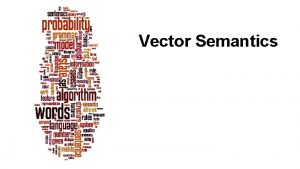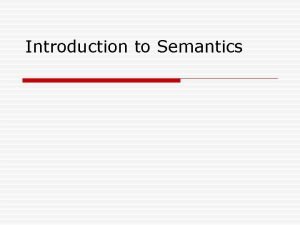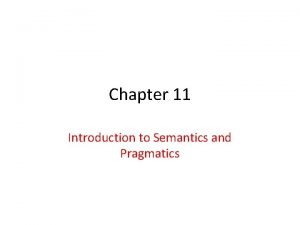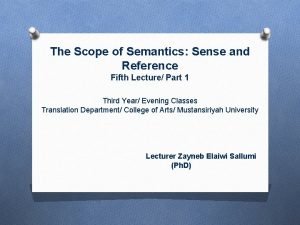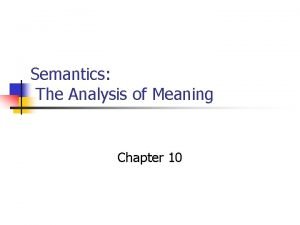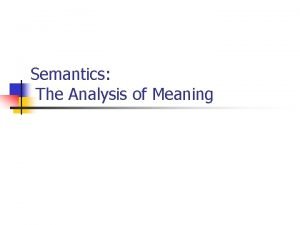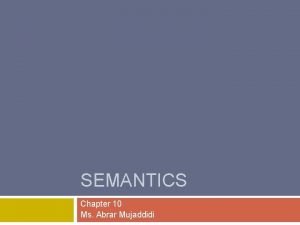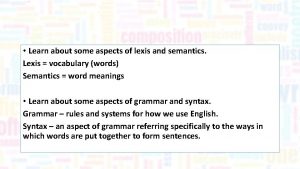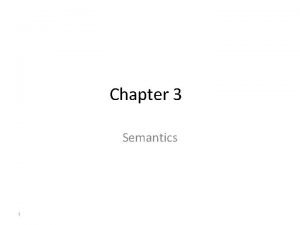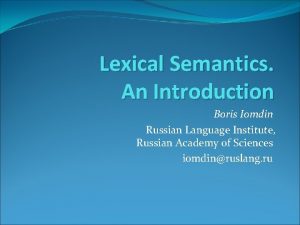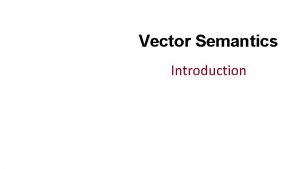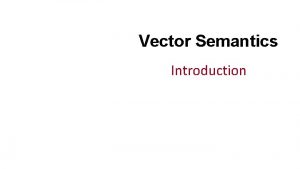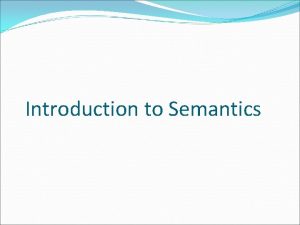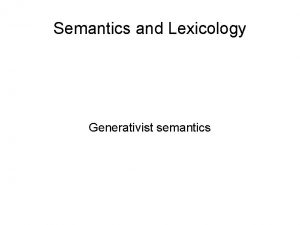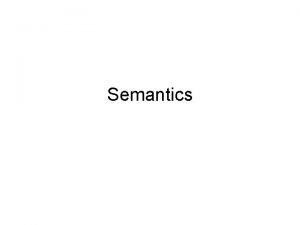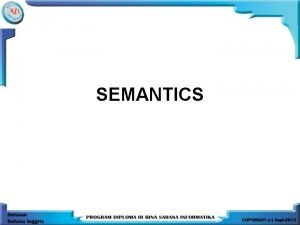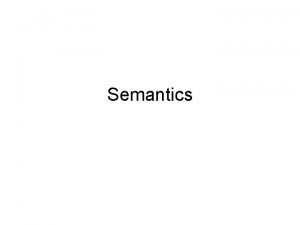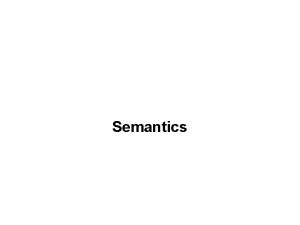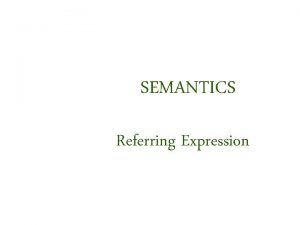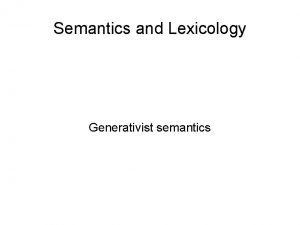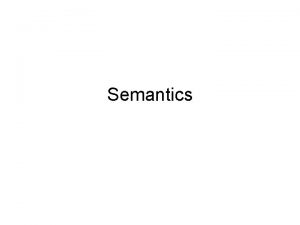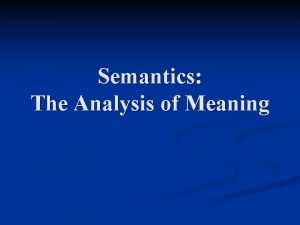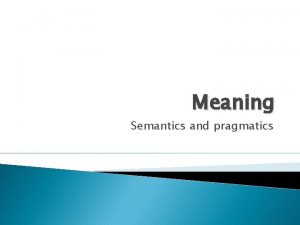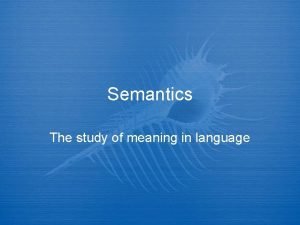Vector Semantics Introduction Why vector models of meaning



















- Slides: 19

Vector Semantics Introduction

Why vector models of meaning? computing the similarity between words “fast” is similar to “rapid” “tall” is similar to “height” Question answering: Q: “How tall is Mt. Everest? ” Candidate A: “The official height of Mount Everest is 29029 feet” 2

Word similarity for plagiarism detection

Word similarity for historical linguistics: semantic change over time Sagi, Kaufmann Clark 2013 Semantic Broadening 45 40 <1250 35 Middle 1350 -1500 30 Modern 1500 -1710 25 20 15 10 5 0 dog 4 deer hound Kulkarni, Al-Rfou, Perozzi, Skiena 2015

Problems with thesaurus-based meaning • We don’t have a thesaurus for every language • We can’t have a thesaurus for every year • For historical linguistics, we need to compare word meanings in year t to year t+1 • Thesauruses have problems with recall • Many words and phrases are missing • Thesauri work less well for verbs, adjectives

Distributional models of meaning = vector-space models of meaning = vector semantics Intuitions: Zellig Harris (1954): • “oculist and eye-doctor … occur in almost the same environments” • “If A and B have almost identical environments we say that they are synonyms. ” Firth (1957): • “You shall know a word by the company it keeps!” 6

Intuition of distributional word similarity • Nida example: Suppose I asked you what is tesgüino? A bottle of tesgüino is on the table Everybody likes tesgüino Tesgüino makes you drunk We make tesgüino out of corn. • From context words humans can guess tesgüino means • an alcoholic beverage like beer • Intuition for algorithm: • Two words are similar if they have similar word contexts.

Four kinds of vector models Sparse vector representations 1. Mutual-information weighted word co-occurrence matrices Dense vector representations: 2. Singular value decomposition (and Latent Semantic Analysis) 3. Neural-network-inspired models (skip-grams, CBOW) 4. Brown clusters 8

Shared intuition • Model the meaning of a word by “embedding” in a vector space. • The meaning of a word is a vector of numbers • Vector models are also called “embeddings”. • Contrast: word meaning is represented in many computational linguistic applications by a vocabulary index (“word number 545”) • Old philosophy joke: Q: What’s the meaning of life? A: LIFE’ 9

Vector Semantics Words and co-occurrence vectors

Co-occurrence Matrices • We represent how often a word occurs in a document • Term-document matrix • Or how often a word occurs with another 11 • Term-term matrix (or word-word co-occurrence matrix or word-context matrix)

Term-document matrix • Each cell: count of word w in a document d: • Each document is a count vector in ℕv: a column below 12

Similarity in term-document matrices Two documents are similar if their vectors are similar 13

The words in a term-document matrix • Each word is a count vector in ℕD: a row below 14

The words in a term-document matrix • Two words are similar if their vectors are similar 15

The word-word or word-context matrix • 16


Word-word matrix • 18

2 kinds of co-occurrence between 2 words (Schütze and Pedersen, 1993) • First-order co-occurrence (syntagmatic association): • They are typically nearby each other. • wrote is a first-order associate of book or poem. • Second-order co-occurrence (paradigmatic association): • They have similar neighbors. • wrote is a second- order associate of words like said or remarked. 19
 Hey bye bye
Hey bye bye Compare procedural semantics and declarative semantics.
Compare procedural semantics and declarative semantics. Resolution of vectors
Resolution of vectors Vector semantics
Vector semantics Difference between model and semi modals
Difference between model and semi modals Dont ask why why why
Dont ask why why why Conceptual semantics
Conceptual semantics Introduction to semantics
Introduction to semantics Reference in semantics examples
Reference in semantics examples Semantics meaning
Semantics meaning Hyponymy
Hyponymy Site:slidetodoc.com
Site:slidetodoc.com Reference and sense in semantic
Reference and sense in semantic Grammatical meaning in semantics
Grammatical meaning in semantics Three challenges in doing semantics
Three challenges in doing semantics Semantic model of translation
Semantic model of translation Associative meaning in semantics examples
Associative meaning in semantics examples Lexis and semantics examples
Lexis and semantics examples Types of anomaly in semantics
Types of anomaly in semantics What is the language in
What is the language in



